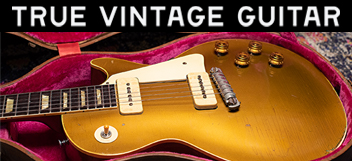Jim Sloves
New member
- Joined
- Aug 15, 2003
- Messages
- 731
Quick question I hope.... noob question
A new Les Paul plays great from frets 1 to about 12. After that in the higher registers, the high B & E strings choke on the frets when I bend up a step or more.
I think I should just adjust the thumbwheel on the treble side of the bridge/saddles to raise those strings. ...As opposed to adjusting the trussrod?
Yes? No? Other?
A new Les Paul plays great from frets 1 to about 12. After that in the higher registers, the high B & E strings choke on the frets when I bend up a step or more.
I think I should just adjust the thumbwheel on the treble side of the bridge/saddles to raise those strings. ...As opposed to adjusting the trussrod?
Yes? No? Other?



